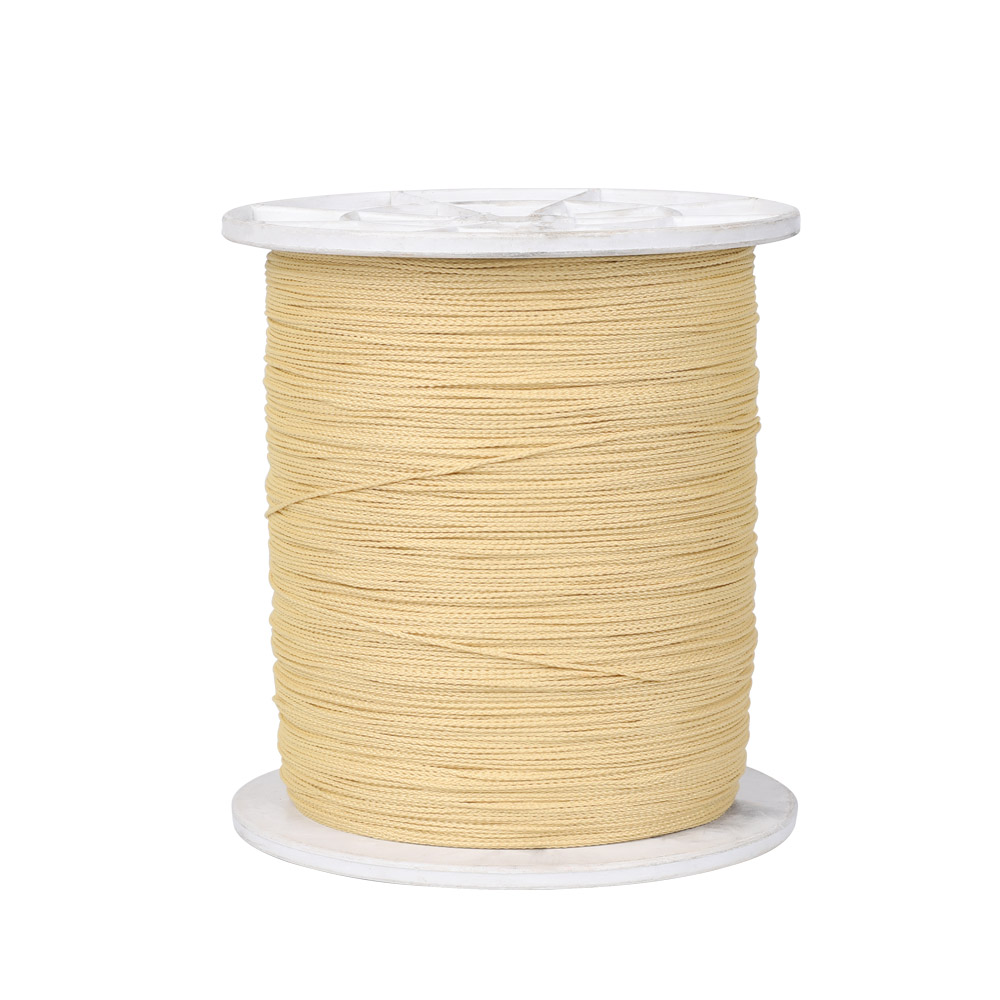Polyester aramid binding wire, also known as polyester-aramid binder yarn or aramid-polyester reinforcement fiber, is a highly specialized material used to improve the structural integrity of various products. Its unique combination of properties—the flexibility and cost-effectiveness of polyester with the incredible strength and thermal resistance of aramid—makes it an ideal choice for demanding applications.
1. Fiber Optic Cables
One of the most significant applications for polyester aramid binding wire is in the construction of fiber optic cables. Within a cable, individual glass fibers (the optical cores) are incredibly fragile. To protect these delicate fibers from stress and damage, they are bundled together. The binding wire is wrapped tightly around these bundles, holding them in place and providing a crucial layer of tensile strength.
-
Role in Cable Protection: The aramid component of the wire provides exceptional strength-to-weight ratio, preventing the cable from stretching or breaking under tension during installation or environmental stress.
-
Thermal Stability: The aramid fibers also offer excellent thermal resistance, protecting the cable from heat-related degradation, which is particularly important in outdoor or high-temperature environments.
2. Electrical and Data Cables
Beyond fiber optics, this binder yarn is also widely used in a variety of electrical and data cables. For example, it is often found in power cables, LAN cables, and control cables. Here, the binding wire serves to:
-
Maintain Core Geometry: It keeps the insulated conductors or twisted pairs organized and compact, preventing them from shifting or becoming unraveled. This ensures consistent electrical performance and signal integrity.
-
Provide Reinforcement: For cables that require a high degree of tensile strength, such as those used in aerial applications or in environments where they might be pulled or stretched, the aramid reinforcement offers a vital layer of protection. This is particularly useful in heavy-duty or industrial cables.
3. Industrial and Special-Purpose Ropes
The high tensile strength and durability of this composite yarn also make it an excellent material for manufacturing special-purpose ropes and cords. These ropes are not for general use but are instead designed for specific industrial or technical applications where strength and reliability are paramount.
-
Reinforcement Component: The aramid-polyester fiber is often braided or twisted into the core of a rope to provide a lightweight yet incredibly strong internal skeleton.
-
Applications: These ropes can be found in a variety of settings, from marine and offshore rigging where they must withstand heavy loads and harsh conditions, to high-performance sporting equipment where a combination of light weight and strength is essential.

4. Medical Devices
The material's strength, combined with its resistance to heat and chemicals, makes it suitable for certain medical device applications. For instance, it can be used in the construction of some catheters or other flexible medical instruments where a strong, non-conductive, and non-corrosive reinforcement is necessary.
-
Biocompatibility: While aramid itself is not always considered fully biocompatible for direct internal contact, its use as an external reinforcing layer in a device can still be highly valuable.
-
Flexibility and Durability: The polyester aramid yarn offers a balance of flexibility and strength, allowing for the creation of durable devices that can withstand repeated use and sterilization procedures.
In summary, the applications for polyester aramid binding wire are extensive and continue to grow as engineers discover new ways to leverage its exceptional properties. It serves as an unseen yet critical component in products where strength, durability, and reliability are non-negotiable. This versatile polyester-aramid binder thread plays a key role in making modern technology more robust and resilient.
 English
English
 中文简体
中文简体









